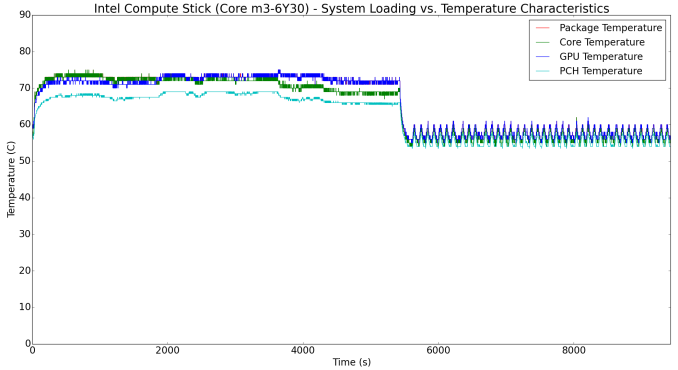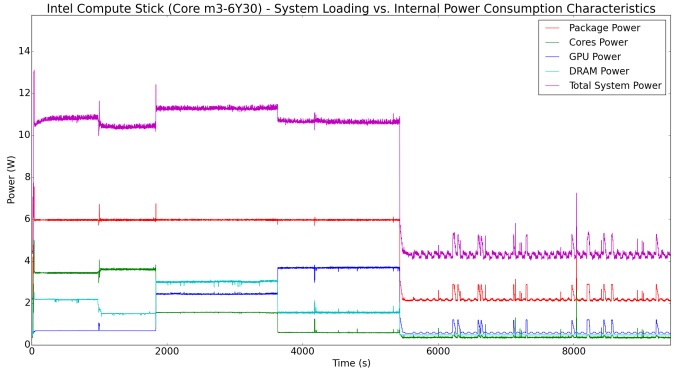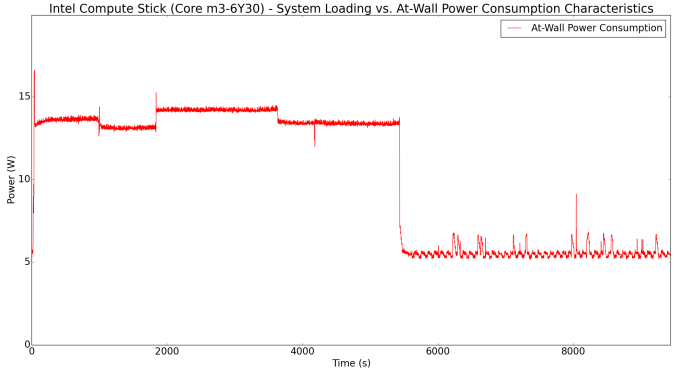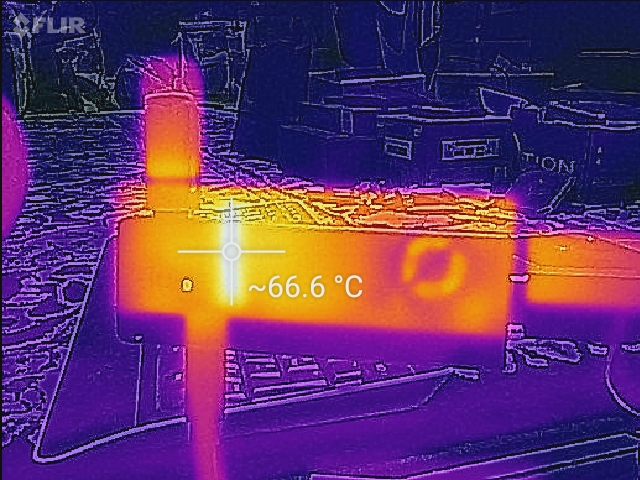The Intel Compute Stick (Core m3-6Y30) Review
by Ganesh T S on June 27, 2016 8:00 AM EST- Posted in
- Systems
- Intel
- Core M
- Skylake
- HDMI Stick
- Compute Stick
Power Consumption and Thermal Performance
The power consumption at the wall was measured with a 1080p display being driven through the HDMI port. In the graphs below, we compare the idle and load power of the Intel Core m3-6Y30 Compute Stick with other low power PCs evaluated before. For load power consumption, we ran Furmark 1.15.0 and Prime95 v28.7 together.


Compared to the Bay Trail and Cherry Trail Compute Sticks, the Core M one has higher idle and load power consumption numbers. Given the upgraded Wi-Fi and the presence of a Core-series CPU, the idle number can probably be justified. The load numbers point to the Core m3-6Y30 being operated in the cTDP-up mode.
Our thermal stress routine starts with the system at idle, followed by 30 minutes of pure CPU loading. This is followed by another 30 minutes of both CPU and GPU being loaded simultaneously. After this, the CPU load gets removed, allowing the GPU to be loaded alone for another 30 minutes. The various clocks in the system as well as the temperatures within the unit are presented below.
According to the official specifications, the junction temperature of the Core m3-6Y30 is 100C. The fan is able to keep it well below that temperature. The system essentially seems limited by the package power. We find that it is only able to sustain 6W for extended time durations, though we do see it spike up higher in the beginning.
Another important aspect to keep note of while evaluating PCs with such a small form factor is the chassis temperature. Using the Android version of the FLIR One thermal imager, we observed the chassis temperature after the CPU package temperature reached the steady state value in the above graph.
We have additional thermal images in the gallery below.
On the whole, the thermals don't give us much cause for concern, though the idling temperature of around 60C for the CPU package seems a little bit too high. It is possible that altering the the default BIOS options may help in improving this aspect.





















105 Comments
View All Comments
okenny - Sunday, July 3, 2016 - link
True.what's with all the SSD reviews? I don't understand why SSDs are so interesting, an upgrade makes little or no difference to system performance unless you move from HDD to SSD or maybe from SATA to NVMe on PCIe or m.2. Don't get it.
okenny - Sunday, July 3, 2016 - link
hmmmm....no HDMI 2.0 at this price point, I'd buy something else like an nVidia Shield.Though I'd prefer Windows.
jakoh - Thursday, December 20, 2018 - link
How does this perform with 1080p Hevc?How is the H265 performance?
jakoh - Thursday, December 27, 2018 - link
Replying here, it’s remarkable at playing hevc content 1080p tested upto 2mbps. So happy with the performance. Thank you intel. It’s my dream media player.I am running Ubuntu 18. So easy to setup.
yeeeeman - Sunday, June 28, 2020 - link
Intel needs to make a lakefield version of this.